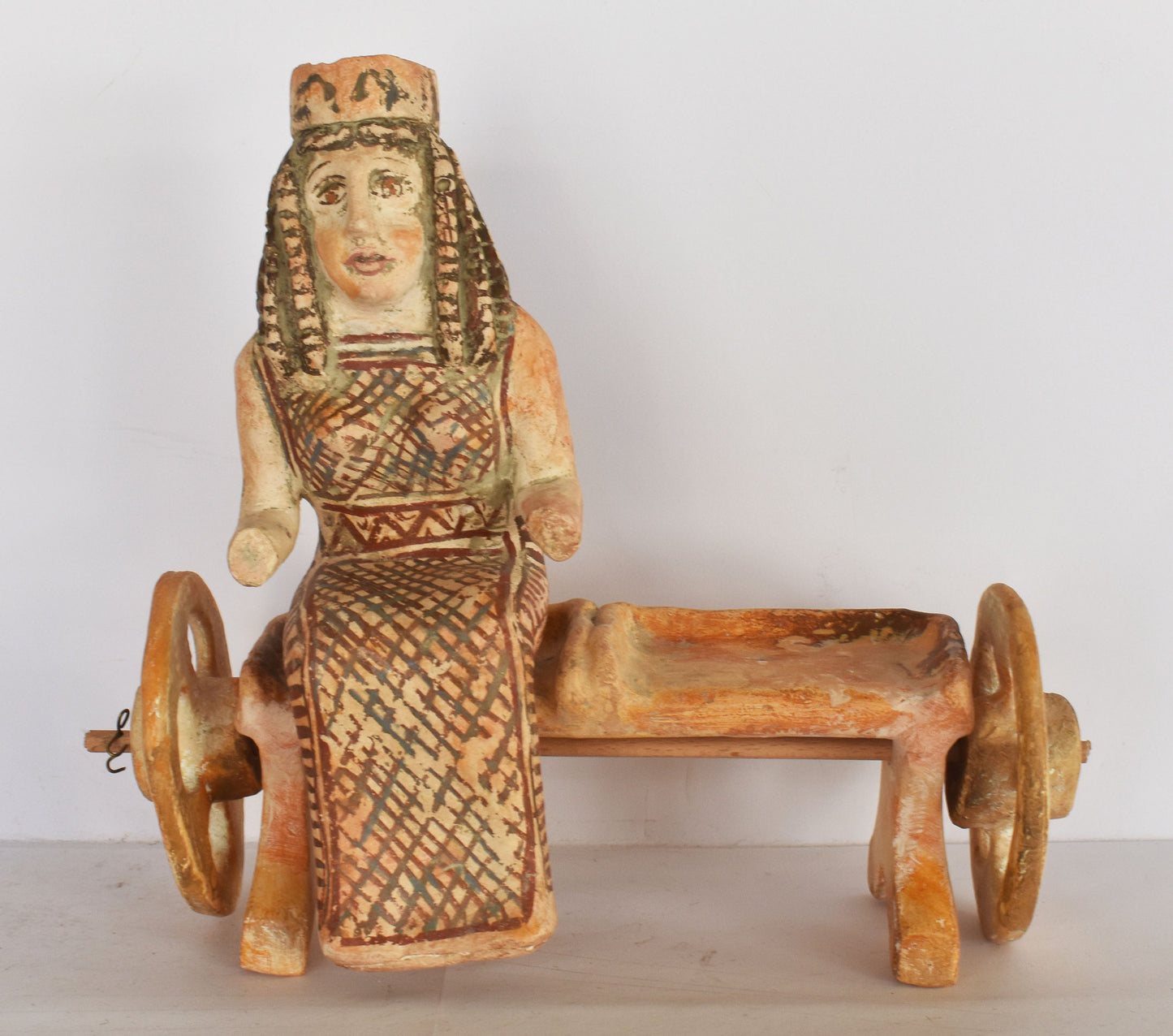Gallery Demeter
Two Women Sitting in a Wheel Vehicle - c 400 BC - Boeotia - Central Greece - Museum Reproduction - Ceramic Artifact
Two Women Sitting in a Wheel Vehicle - c 400 BC - Boeotia - Central Greece - Museum Reproduction - Ceramic Artifact
Regular price
€269,90 EUR
Regular price
Sale price
€269,90 EUR
Unit price
per
Tax included.
Shipping calculated at checkout.
Couldn't load pickup availability
Item Specifics
Material: Ceramic
Condition: New, Handmade in Greece.
Height: 24 cm - 9,4 inches
Width: 27 cm - 10,6 inches
Length: 11 cm - 4,3 inches
Weight: 2150 g
Boeotia had significant political importance, owing to its position on the north shore of the Gulf of Corinth, the strategic strength of its frontiers, and the ease of communication within its extensive area. On the other hand, the lack of good harbors hindered its maritime development.
The importance of the legendary Minyae has been confirmed by archaeological remains (notably the "Treasury of Minyas"). The Boeotian population entered the land from the north possibly before the Dorian invasion. With the exception of the Minyae, the original peoples were soon absorbed by these immigrants, and the Boeotians henceforth appear as a homogeneous nation. Aeolic Greek was spoken in Boeotia.
In historical times, the leading city of Boeotia was Thebes, whose central position and military strength made it a suitable capital; other major towns were Orchomenus, Plataea, and Thespiae. It was the constant ambition of the Thebans to absorb the other townships into a single state, just as Athens had annexed the Attic communities. But the outlying cities successfully resisted this policy, and only allowed the formation of a loose federation that, initially, was merely religious.
While the Boeotians, unlike the Arcadians, generally acted as a united whole against foreign enemies, the constant struggle between the cities was a serious check on the nation's development. Boeotia hardly figures in history before the late 6th century BC.
Previous to this, its people are chiefly known as the makers of a type of geometric pottery, similar to the Dipylon ware of Athens. In about 519 BC, the resistance of Plataea to the federating policy of Thebes led to the interference of Athens on behalf of the former; on this occasion, and again in 507 BC, the Athenians defeated the Boeotian levy.









